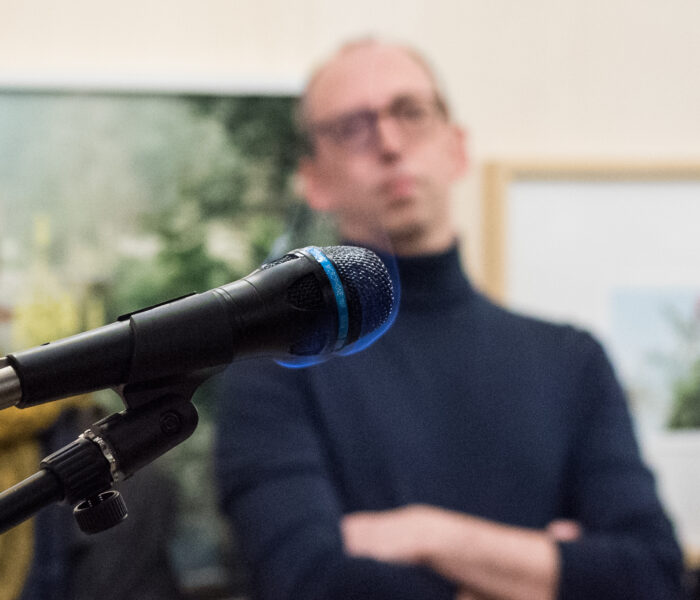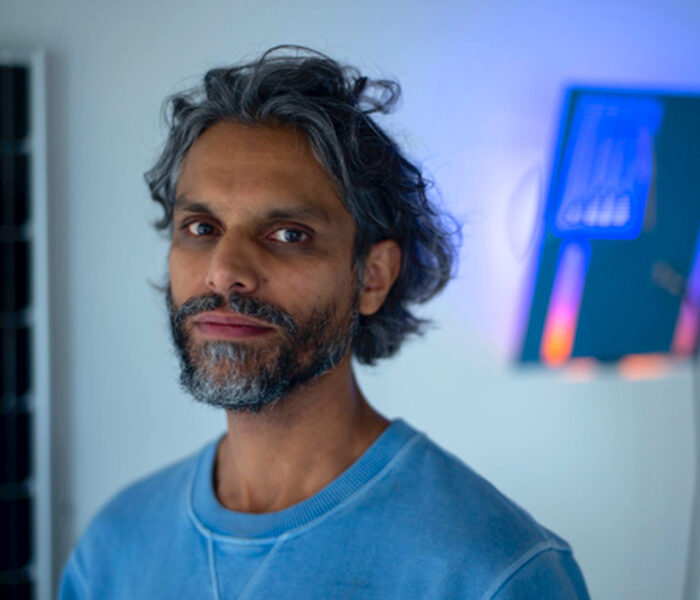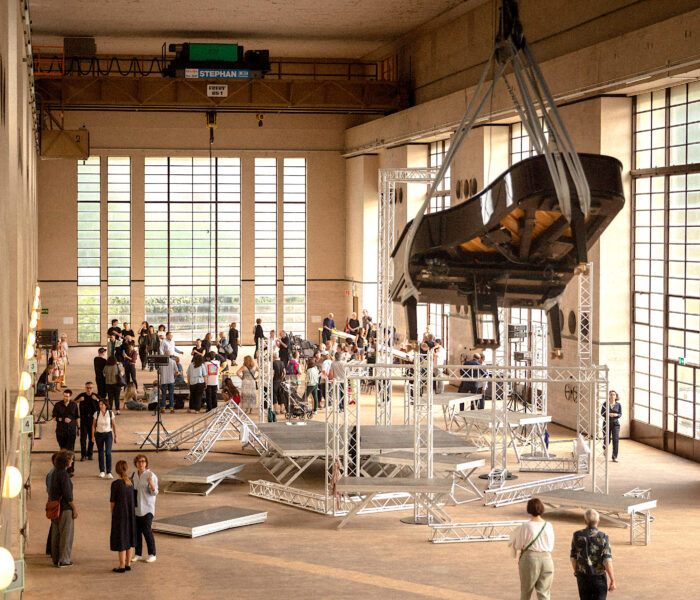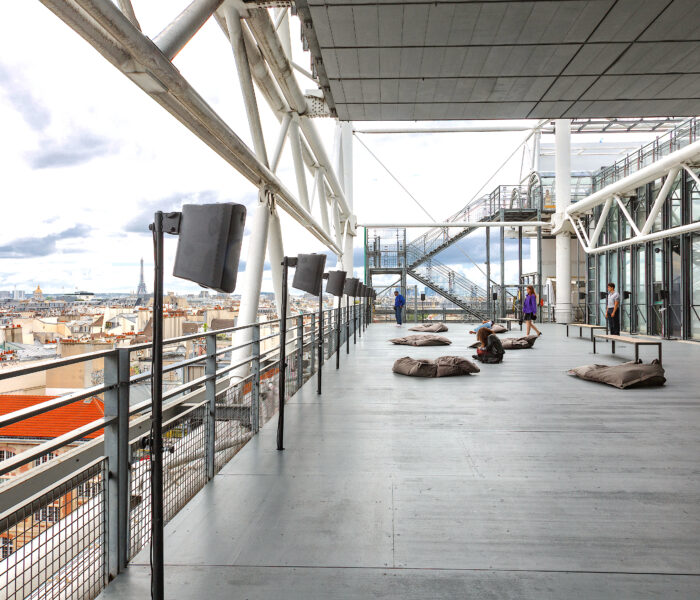Basé à Berlin, récipiendaire du Prix Marcel Duchamp en 2009, Saâdane Afif est ce que l’on peut appeler un artiste pluridisciplinaire, ou plutôt indiscipliné, ou encore post-conceptuel, car le sujet de son oeuvre n’est pas tant la musicalité, qui pourtant traverse, comme un fil rouge, depuis 2004, ses expositions, performances et textes, mais bien la place accordée à la perception esthétique, au regard de l’autre. Nommé directeur artistique de Bergen Assembly 2022, la Triennale de Bergen en Norvège, en compagnie de Yasmine d’O. qu’il a désignée curatrice, il évoque son parcours, la genèse du projet et l’objet à sept faces dont la quête prend temporairement fin le 6 novembre.
John Cage a dit: “One way to study music is to study Duchamp”. Connaissant ton projet The Fountain Archives (ndlr: basé sur l’oeuvre Fountain (1917) de Marcel Duchamp) et ton intérêt, pour dire de manière indifférente ta fascination ou ta passion pour Marcel Duchamp, es-tu arrivé à la création musicale par l’intermédiaire de cette figure tutélaire ?
Saâdane Afif : Non pas du tout ! Enfin…Quand on me pose des questions sur le rapport de mon travail à la musique, je commence par rappeler que ce n’est pas la musique qui m’intéresse. Je ne suis pas musicien. J’ai depuis toujours utilisé le son comme un matériau parmi d’autres mais c’est plutôt une attention particulière à l’art conceptuel dans son rapport au langage qui m’a mené à démonter le processus de création des chansons. C’est arrivé par le texte et comme souvent par la mise en forme d’une intuition. En 2004, à l’occasion d’une petite exposition personnelle au Folkwang Museum d’Essen, j’ai été invité à présenter des pièces existantes. Ce qui à l’époque n’était pas très inspirant et un peu frustrant, car en tant que jeune artiste, je voulais surtout essayer des nouvelles choses. Coincé entre un budget dérisoire et un curateur peu coopératif, j’ai imaginé un protocole simple pour pouvoir quand même tirer une expérience enrichissante de ce contexte peu enthousiasmant. J’ai donc demandé à l’artiste Lili Reynaud-Dewar, dont je connaissais le talent littéraire, si elle accepterait d’écrire quatre textes de chansons à partir des quatre œuvres que je présentais. Bien sûr, je ne me doutais pas de l’importance que prendrait ce geste dans ce qui allait suivre. Depuis j’ai répété l’expérience plus de deux cents fois, une grande partie de ces textes sont publiés dans le livre Paroles. Mais, à ce moment précis, l’idée c’était de produire une forme de commentaire décalé et surtout de trouver une stratégie pour inclure d’autres présences dans l’espace du travail. Je devais trouver une solution pour ne pas rester dans la figure imposée de l’artiste seul face à son œuvre.
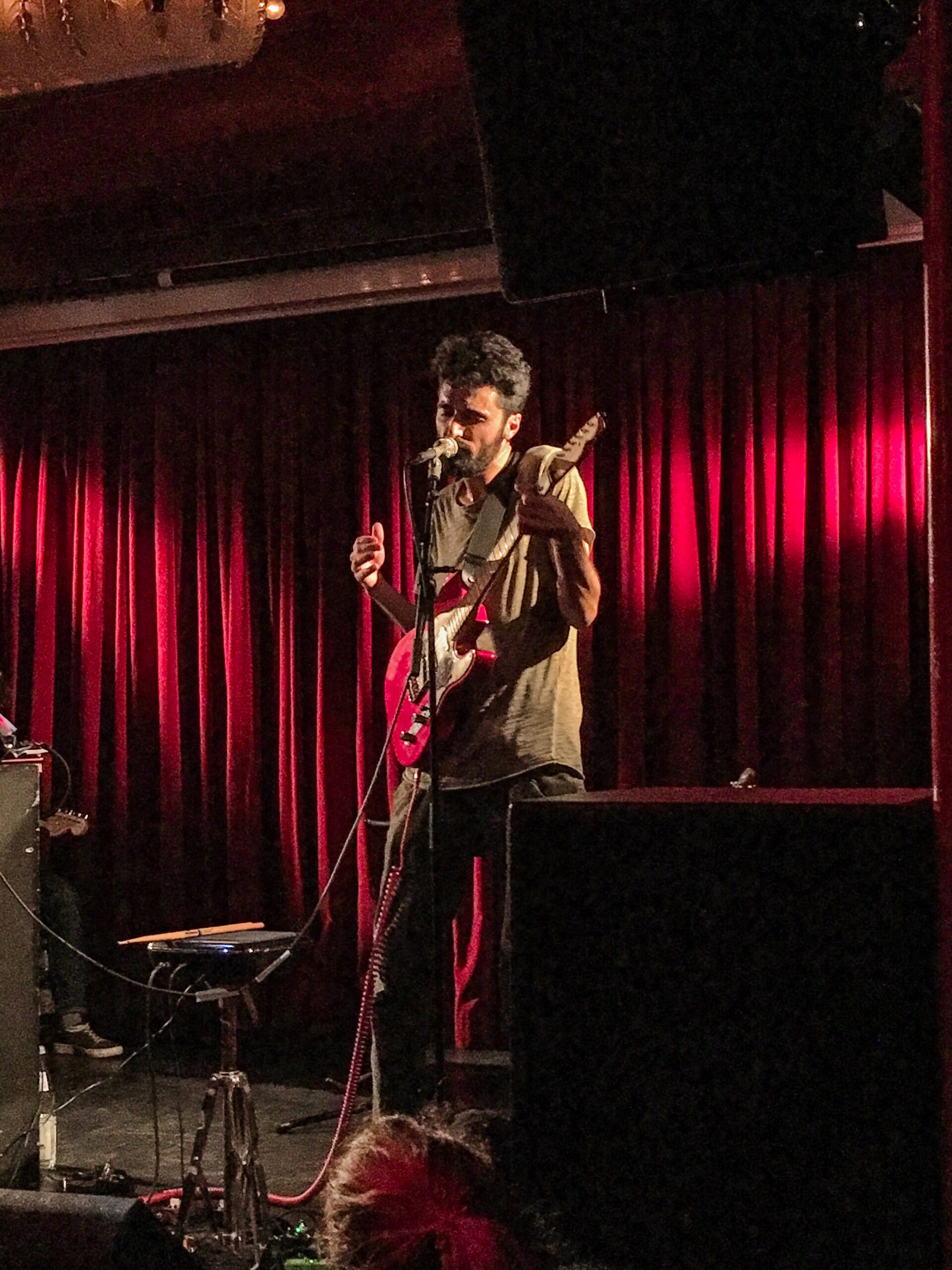
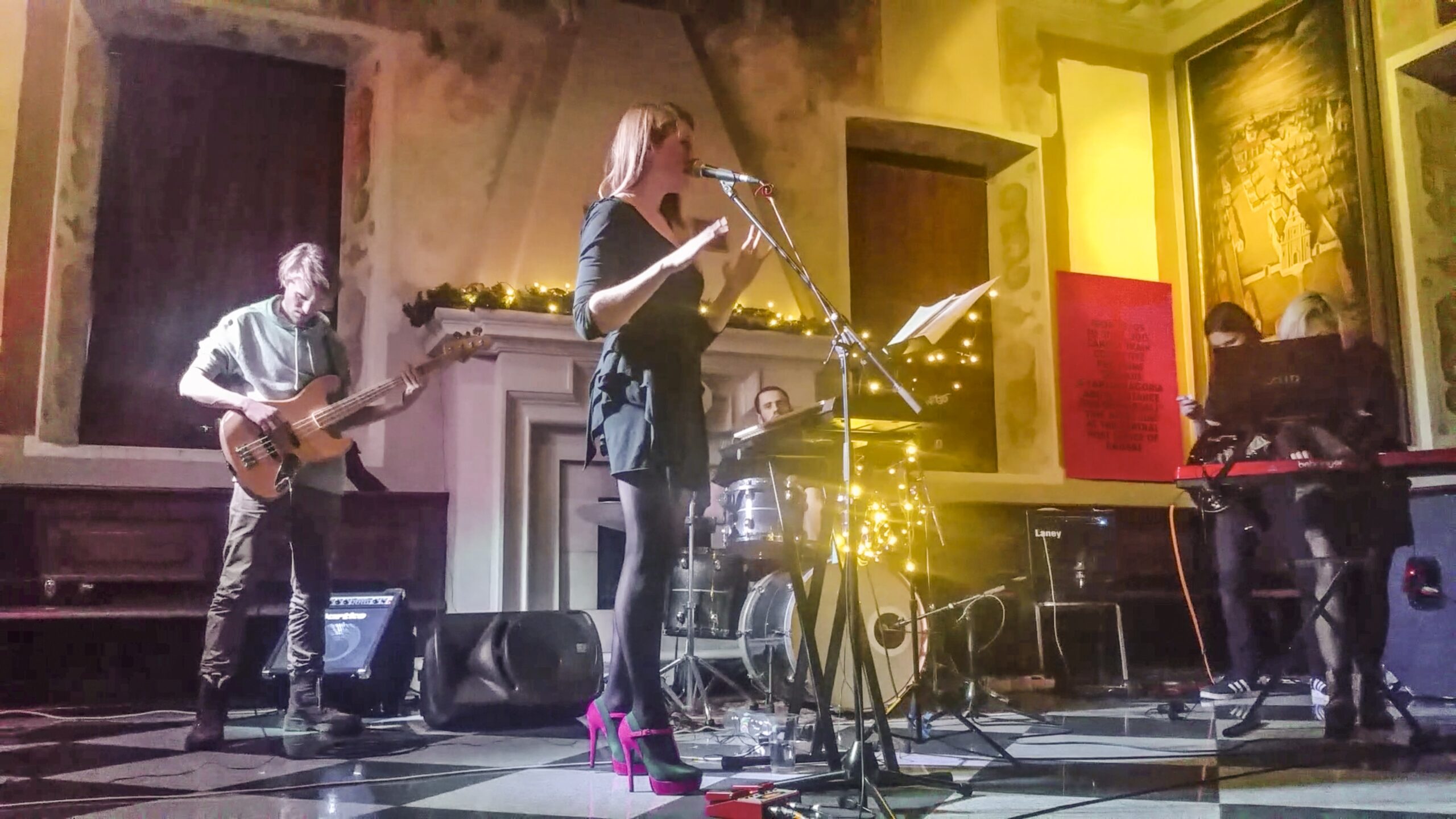
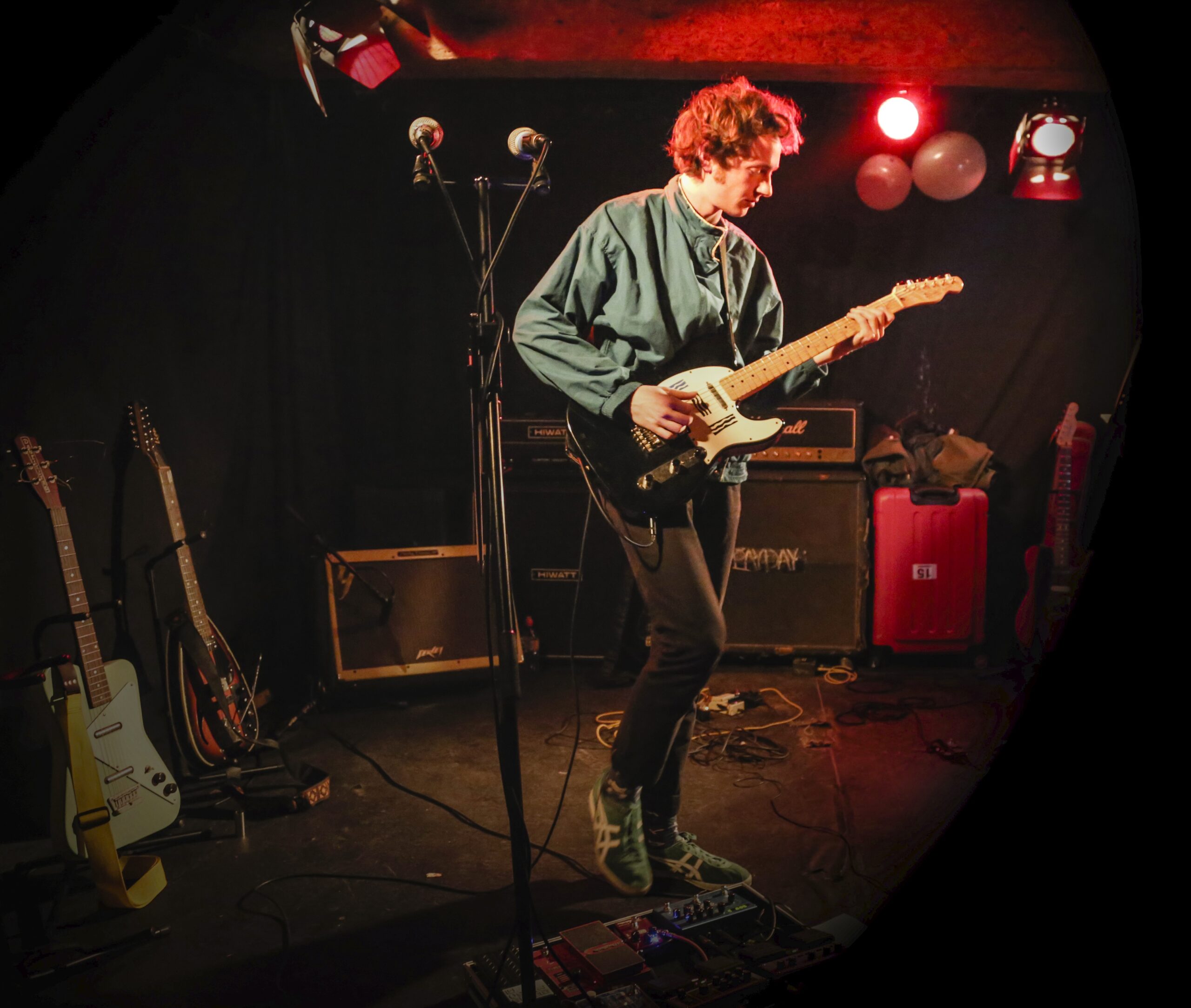
Est-ce l’aspect collaboratif de la musique qui t’intéresse?
Encore une fois je ne suis pas musicien mais j’ai été pendant quelques années un très mauvais batteur dans un groupe. Une formation pop rock de base, guitare, basse, batterie. Comme pour beaucoup de groupes amateurs, tout se passait pendant les répétitions. Nous ne composions pas, rien n’était préconçu, nous ne lisions pas la musique et pourtant comme par magie quelque chose de cohérent jaillissait de ce magma. Un morceau se construisait. Oui cette forme collaborative de création est enivrante et j’ai peut-être cherché à réintroduire un peu de cette expérience dans mon travail. Mais c’est bien par une réflexion sur l’art et non sur la musique que s’est opéré ce retour. Ces chansons que je commande ne prennent leur sens que parce qu’elles s’inscrivent dans une histoire de l’art. Il y a une filiation. Elles naissent d’un protocole précis. Elles me permettent d’aérer le travail, de le nourrir, de l’ouvrir à l’imaginaire de l’autre. Elles posent avant tout la question de la place des œuvres dans nos sociétés, de la façon dont on les regarde. Pour rejoindre Duchamp ces textes de chansons donnent une forme à ce qui se produit dans l’esprit du regardeur quand il fait le tableau. Cette question de la perception est un exercice collectif, collaboratif qui se joue entre l’artiste, son œuvre et ceux qui la regardent. J’ai choisi sciemment le format chanson, un format populaire, d’une part parce que c’est une forme poétique, pas une explication, d’autre part parce que, pour tout le monde une chanson a un sujet, alors pourquoi pas une œuvre ?
On dit que ta pratique est enracinée dans la musique, dans ses composantes, son vocabulaire, sa nature – la durée plus que l’espace, mais aussi dans sa matérialité, ses instruments en tant qu’objets plastiques, comme tu as pu les arranger dans certaines de tes installations. Est-ce la dimension plastique et visuelle de la musique, c’est-à-dire la dimension qui ne fait pas la nature de la musique, qui t’intéresse ?
Ces textes de chanson qui sont devenus de fait un matériau de mon travail m’ont également permis de prendre des directions inattendues. La question a été rapidement de savoir comment les incarner et leur donner vie. Au départ, le plus évident fut de les confier à des musiciens. J’ai donc commencé à explorer pour la première fois des formes performatives liées à la création musicale. J’ai d’abord proposé des expositions basées sur des répétitions, des expositions concerts, des expositions qui montrent l’ensemble des étapes de production d’un disque, pour finir il y a quelque temps par exposer au Wiels, les visiteurs en train d’interpréter eux-mêmes les chansons dans un studio conçu à cet effet. La production d’un morceau depuis l’écriture des paroles jusqu’au moment où elles seront articulées sur une scène ou ailleurs dans la bouche d’un interprète, c’est une chaîne d’interprétation qui transposée dans le champ des arts visuels devient un outil puissant de représentation, une allégorie. Donc pour revenir à ta question, c’est plutôt le processus conceptuel de création de la musique, les temporalités à l’œuvre, les combinaisons d’énergies possibles et ses modes de transmission qui m’intéressent bien plus que sa dimension plastique et visuelle, même si elle a du charme. J’ai quand même poussé le détail jusqu’à monter un label, Lyrics Records, à la fois archives des projets et objet d’échanges avec les musiciens. Mais je pourrais paraphraser Magritte et dire « ceci n’est pas un disque ».
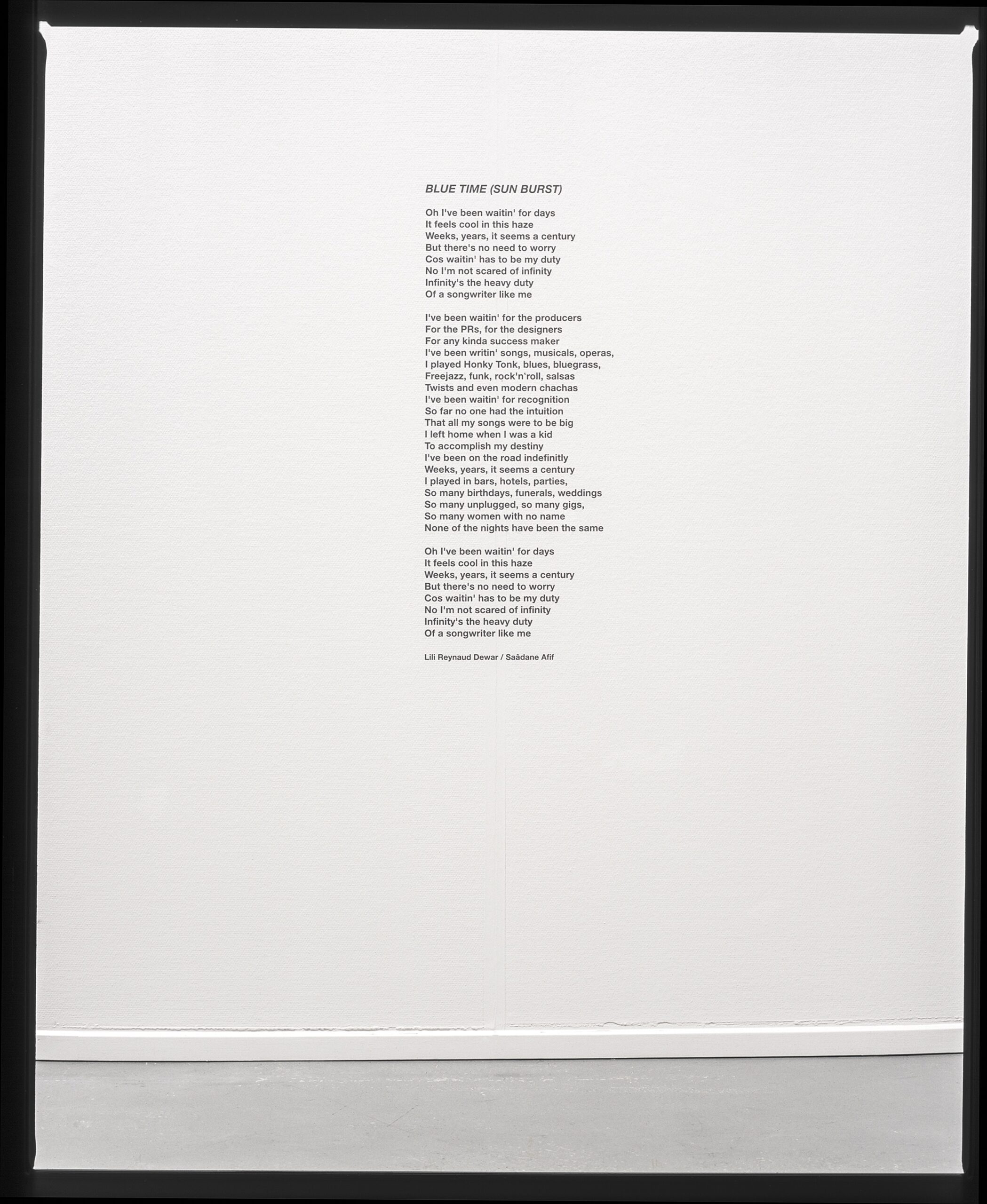
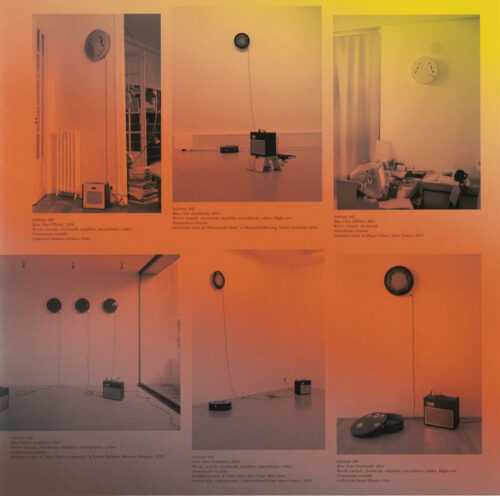
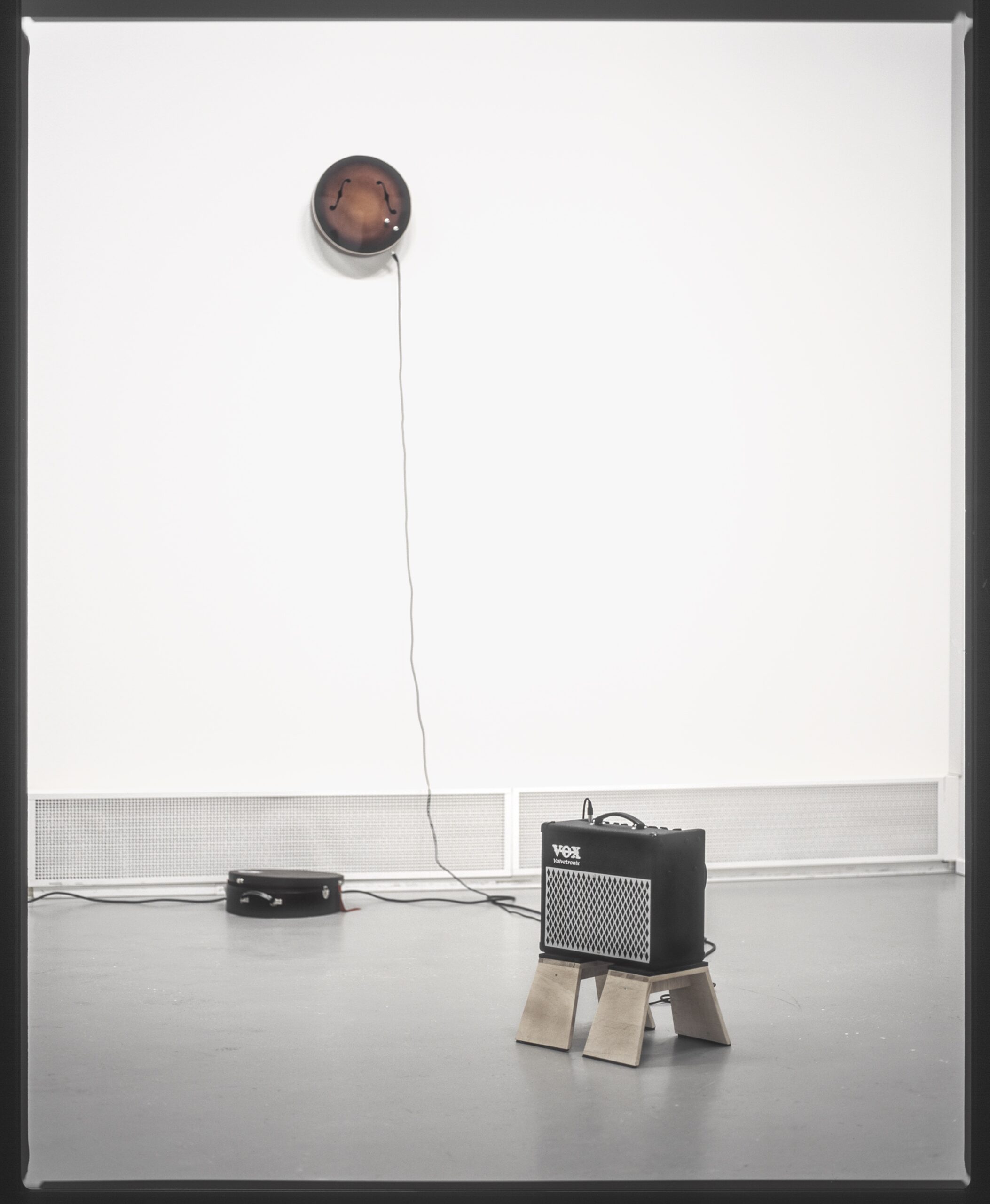
Avec ce label tu t’apparentes à un producteur de musique. Et les invitations que tu lances aux artistes ont tout de même une dimension très curatoriale… Et si on abordait justement ton rôle de curateur à la Triennale de Bergen ou Bergen Assembly 2022 ? Comment en es-tu arrivé là ?
Bergen c’est une longue histoire qui a commencé avant Bergen. A l’occasion de la Biennale de Marrakech, j’ai conçu une performance, orpheline de ce système oeuvre-texte-musique dont je viens de te parler. J’ai demandé à ce qu’on trouve un professeur qui accepterait de donner des cours de géométrie sur la place Jemaa el-Fnaa. Le professeur arrivait ainsi tous les soirs avec son flipboard, totalement plongé dans le réel, à savoir qu’aucun signe ne montrait que son cours était un projet artistique. Il prenait place parmi les saltimbanques qui peuplent le lieu et commençait « Aujourd’hui le triangle… ! ». Et il réussissait lui aussi à créer un cercle autour de lui, un cercle de gens avec des niveaux de regards très différents. Il y avait évidemment des visiteurs de la biennale qui étaient informés ; des gens de la montagne, fascinés, qui n’avaient jamais assisté à un cours ; des touristes marocains éduqués venus des grandes villes, étonnés, qui se demandaient pourquoi et comment ce professeur en était arrivé à enseigner sur la place. Des Frères musulmans ont aussi débarqué, suspicieux. Dans le monde arabe, si on touche à la géométrie, on touche à Dieu. Bref, les passants se demandaient ce qu’il faisait là, et en même temps ils suivaient son cours de géométrie aussi attentifs que dubitatifs. La géométrie en tant que langage universel c’est un peu le ready-made suprême. La géométrie, mère de toutes les formes, était posée au milieu de la place Jemaa el-Fnaa parmi les montreurs de serpents et les diseuses de bonne aventure. Je me suis dit qu’une nouvelle aventure commençait.
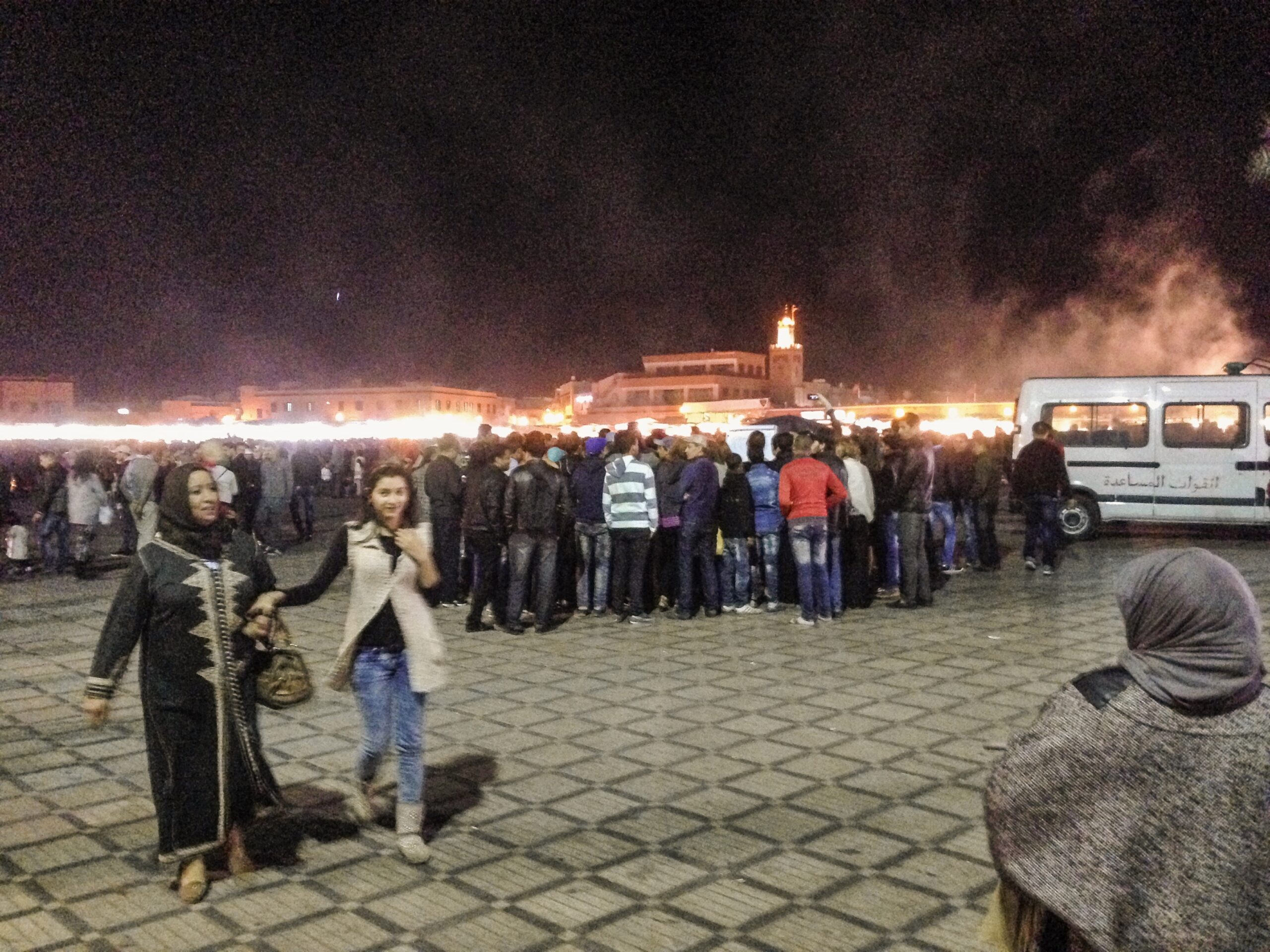


On sent que tu déploies une œuvre toujours en plusieurs épisodes…
Exactement. Pour rester dans le sujet, ça rejoint la production d’un disque, d’abord un morceau puis deux, on assemble le tout pour produire un album, puis on fait une tournée, des clips etc. Pour prolonger cette histoire de Marrakech je voulais raconter sous forme de fiction comment cette performance a pu, aurait pu ou a transformé ce qui l’entoure à travers ceux qui en ont été les témoins. Encore une fois les questions qui me motivent – qui sont d’ailleurs dans le format texte-chanson ou dans le projet des Archives de la Fontaine – c’est notre relation à l’art. Comment une société donnée produit-elle un art ? A qui appartient cet art ? Existe-t-il un art universel ? Mais aussi comment le regarde-t-on? Comment l’inclut-on ? Comment transforme-t-il la réalité qui nous entoure ? Comment l’art s’immisce-t-il dans nos systèmes de pensées ? Parce que tout ça ne va pas de soi.
Est-ce là que Yasmine d’O entre en scène ?
Pas encore, mais elle arrive bientôt ! Donc pour donner une suite à cette performance, j’ai commandé à l’écrivain Thomas Clerc une pièce de théâtre… J’ai formulé la commande à peu près en ces termes : « Un jour à Marrakech, un professeur est venu donner des cours de géométrie dans l’espace public sur la place Jemaa el-Fnaa. Quelques temps après cet événement, des choses inhabituelles se sont produites, certains personnages typiques de la place se sont mis à parler en Géométrie ». Ils ont développé une langue ornementale. On a pu voir mais surtout entendre au détour des ruelles de la médina, ou aux terrasses des cafés qui bordent la place, des conversations d’une très haute abstraction. Le texte de cette pièce de théâtre servira de base au développement d’une ou plusieurs expositions à venir.
En fait, tu lui as passé une commande similaire à celle que tu passes à un auteur pour un texte de chanson à partir d’une de tes œuvres ?
Exactement, en fait on pourrait appeler ça une méthode. Thomas a accepté et nous sommes partis à Marrakech où je lui ai montré la ville et les personnages typiques de la place. Et c’est là qu’apparaît la première Yasmine mais pas encore Yasmine d’O. L’originale disons. Ensemble, on a visité la Maison de la Photographie de Marrakech, et je suis tombé sur l’image étonnante d’une femme arabe en train de jouer au billard français à Paris. La photo datait des années 1950, elle était manifestement des années 1930. Il y avait une erreur sur le cartel. J’ai commencé à faire des recherches et j’ai découvert Yasmine d’Ouezzan, la fille d’une notable de Valencienne et d’un chérif d’Ouezzan dont la vie a traversé le siècle dernier. On disait une aventurière, mais plutôt une femme qui a cherché son émancipation par de nombreux moyens, dont le billard. Elle avait pour amant Vincent Scotto, le parolier de Tino Rossi et Joséphine Baker, une star. J’ai demandé à Thomas s’il pouvait l’intégrer à sa liste de personnage puis j’ai attendu. Une fois la commande passée et acceptée, je n’ai aucune idée de ce que je vais recevoir et je ne m’immisce jamais dans le processus de création. Quelques semaines plus tard, j’ai eu le plaisir de lire L’Heptaèdre dans lequel Yasmine d’Ouezzan est devenue l’héroïne, Yasmine. Donc apparaît la deuxième Yasmine, la fictionnelle. L’intrigue est simple, c’est une quête. Yasmine est à la recherche d’une forme, un solide à sept faces, un heptaèdre. Pour trouver cette forme, elle rencontre sept personnages qui sont : le Professeur, le Bonimenteur, le Conducteur de mobylette, la Diseuse de bonne aventure, le Charbonnier, l’Acrobates [sic] (qui sont deux mais n’en font qu’un), et la Touriste. La pièce est en 49 actes, les dialogues vont vite et ressortent du théâtre de l’absurde. Sans être une ébauche, elle laissait beaucoup d’espace à l’imaginaire. La réponse de Thomas était parfaite. Je ne voulais pas monter la pièce au théâtre, je voulais m’en servir comme un support pour développer autre chose. J’avais une base.
Voulais-tu t’en servir comme d’un score, d’une partition?
Une fois un protocole lancé, il devient souvent partition. Il faut juste être attentif à ce qu’il peut produire. J’avais le texte, les personnages, cette deuxième Yasmine de fiction. A ce moment-là, je ne connaissais pas Bergen Assembly. On est en 2016-17. Je prépare alors une première exposition à la Kunsthalle de Vienne où je présente le texte de Thomas Clerc sur un surtitreur comme on en utilise au théâtre pour la traduction, réplique après réplique, et je confronte le texte et son héroïne Yasmine (la fictionnelle) à la vraie vie de Yasmine d’Ouezzan. L’exposition est sur panneaux et présente un ensemble de documents, coupures de presse, photos, carnets et pressbooks : un format austère qu’on trouve dans les centres de documentation ou les halls de mairie. J’ai travaillé ensuite avec Starstyling, des créateurs de Berlin, que j’ai convaincus de baser leur collection publique sur les sept personnages de la pièce. Il existe dorénavant cette collection Solide Figure de Starstyling inspirée par l’Heptaèdre. Ces vêtements ne sont pas les costumes de la pièce, ils existent dans une tout autre économie que la mienne. Et pourtant chaque ensemble porte le nom d’un personnage. C’est une première mise en scène dont les acteurs sont les clients de Starstyling. Dans la collection, il y a quelques tubes, comme cette casquette sur laquelle est écrit Tourist qu’on voit pas mal dans la rue. Puis on m’a proposé la place de convener – que j’ai traduit par directeur artistique – de Bergen Assembly 2022…
En 2011 ou 2012, j’ai rencontré Solveig Øvstebø à Bergen qui venait d’éditer The Biennial Reader qui était une sorte de méta-biennale, une anthologie de discours à propos du format de la biennale en permanente réinvention. On a toujours l’impression que le commissaire d’une biennale veut réinventer le modèle ou on lui demande de réinventer le modèle. Un artiste serait peut-être d’une certaine façon plus qualifié qu’un curateur. En 2022, c’était intéressant de suivre en stéréophonie le travail de deux artistes français au commissariat d’une biennale : Kader Attia à la Biennale de Berlin et toi à Bergen. Quelle a été ton approche en tant qu’artiste ?
C’est probablement pour cette raison que j’ai été choisi. Il fallait maintenant formuler un projet, on m’a donné six mois pour le développer. Au même moment, je travaillais avec la pièce de Thomas. On a toujours les choses sous le nez. Bergen Assembly c’est l’idée de faire assemblée. J’avais cette pièce qui raconte l’histoire de quelqu’un qui est à la recherche d’une forme – un artiste cherche une forme, un curateur cherche une forme -. Elle rencontre sept personnages qui a la fin s’assemblent pour devenir cette forme. Tout était dit. Initialement, je voulais faire une odyssée d’expositions personnelles à partir de ce texte, pourquoi pas la réaliser à Bergen dans le cadre d’une triennale en invitant d’autres artistes ? J’ai donc décidé d’utiliser la pièce pour construire le projet curatorial de Bergen Assembly. Cette idée née à Marrakech commençait à migrer doucement vers le nord de l’Europe. Partagée, elle allait s’hybrider et grandir au contact d’autres contextes.
C’est amusant car c’est le trajet inverse de Peer Gynt, le personnage éponyme de la pièce d’Ibsen mise en musique par le compositeur natif de Bergen, Edvard Grieg, dont l’odyssée va de la Norvège au désert du Maroc.
En effet nous aurions pu nous croiser en route… Et c’est en chemin que j’ai invité une troisième Yasmine, Yasmine d’O. la curatrice de l’exposition. Cette homonymie est une coïncidence. C’est avec elle que nous avons mis en place les principes de l’exposition. Il y aurait sept expositions dédiées chacune aux sept personnages de L’Heptaèdre, présentées dans sept lieux de la ville. Chaque exposition réunit les œuvres de trois artistes. Pour suivre le vocabulaire théâtral, Bergen est la scène, les expositions sont les personnages, les œuvres des artistes invités sont les acteurs qui donnent vie aux personnages et le rôle principal, le plus important, celui du personnage de Yasmine, est attribué au public qui est invité à rejouer sa quête. Et ce qui reste dans la tête du visiteur c’est l’Heptaèdre, c’est ce qu’il aura construit à partir de sa perception de l’ensemble.
Sans faire de psychologie, est-ce que ce personnage semi-fictionnel te permet d’endosser ce qui n’est pas toi ? Est-ce une manière de se voiler ? Ou est-ce seulement une superfiction ? Ou encore un prétexte littéraire et artistique un peu plus inspirant qu’un propos curatorial traditionnel ?
Je dirais tout ça en même temps. Yasmine d’O. est une personne semi-fictionnelle ou un personnage semi-réel… Sans elle, sans le rapport intime qu’elle entretient avec cette histoire, avec cette quête, rien n’aurait pu arriver. Nous avons même essayé d’avoir deux salaires…


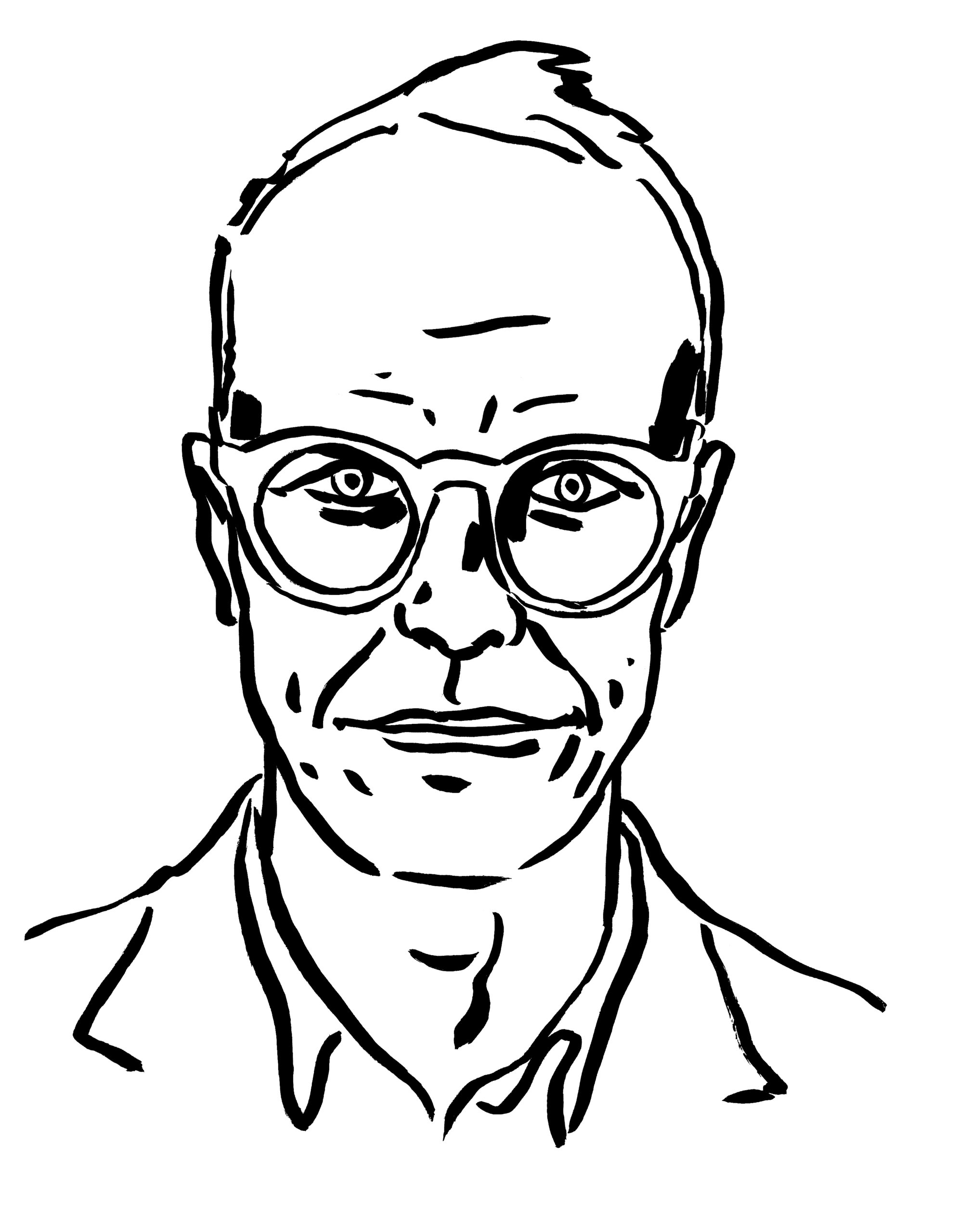
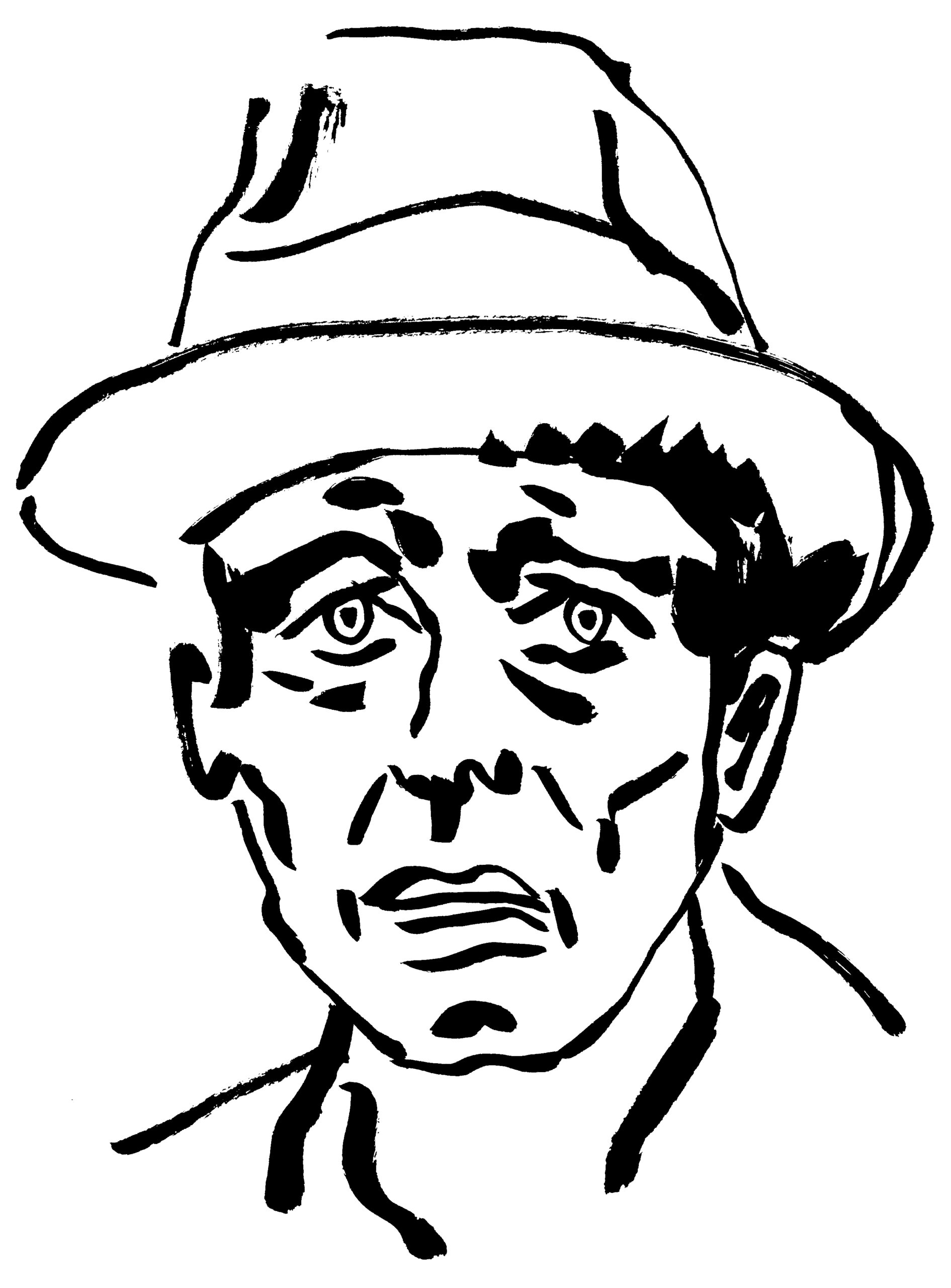
C’est malin… pour que la fiction devienne totalement réalité. Malheureusement ce n’est resté qu’une fiction.
Yasmine d’O. se serait même contentée d’un salaire semi-réel… mais ça n’a pas été possible. Pourtant c’est bien le travail de deux personnes qui a été effectué au cours de ces trois années.
Sans compter qu’elle est aussi rédactrice en chef de Side Magazine, la publication dédiée aux personnages.

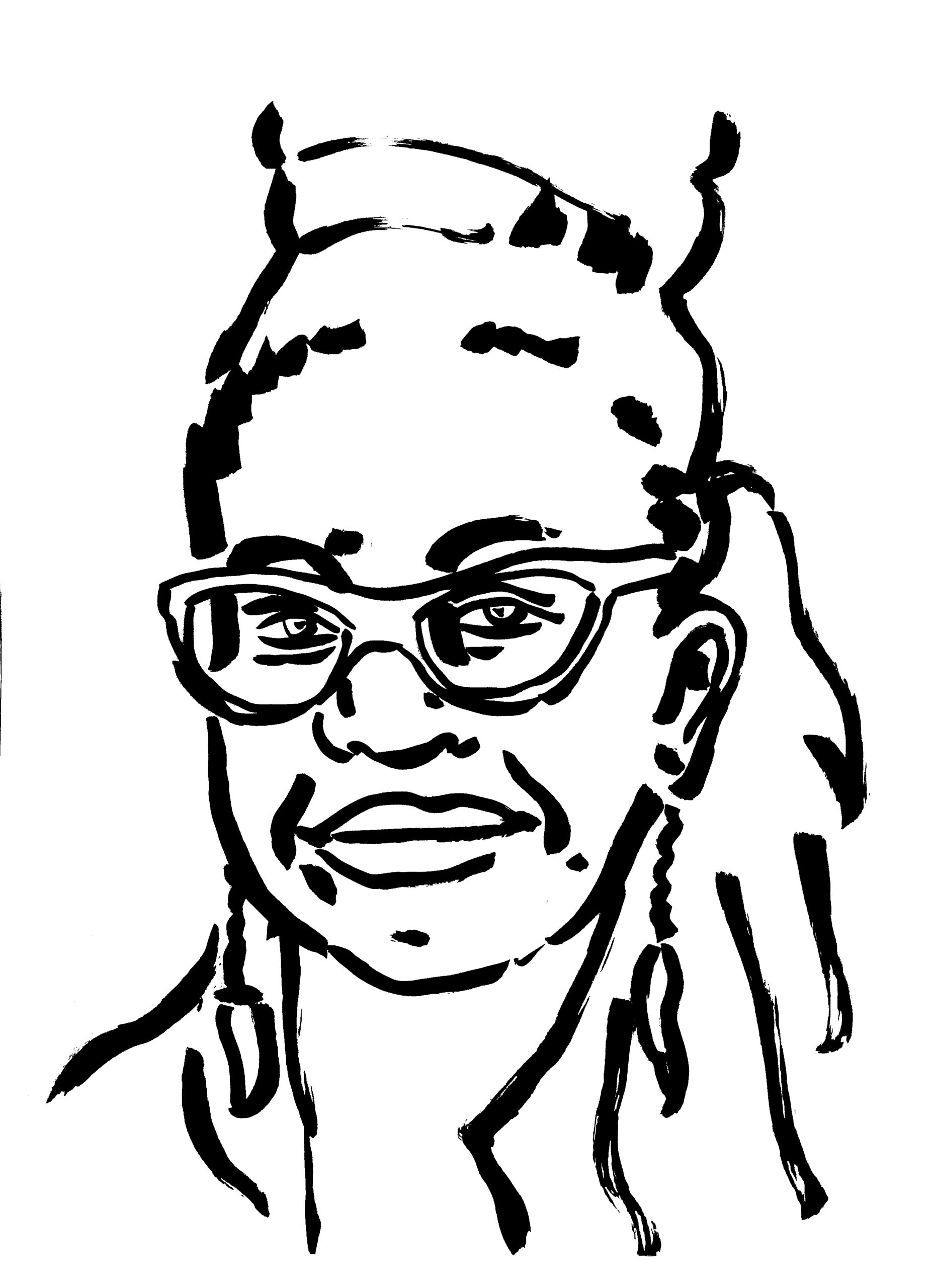
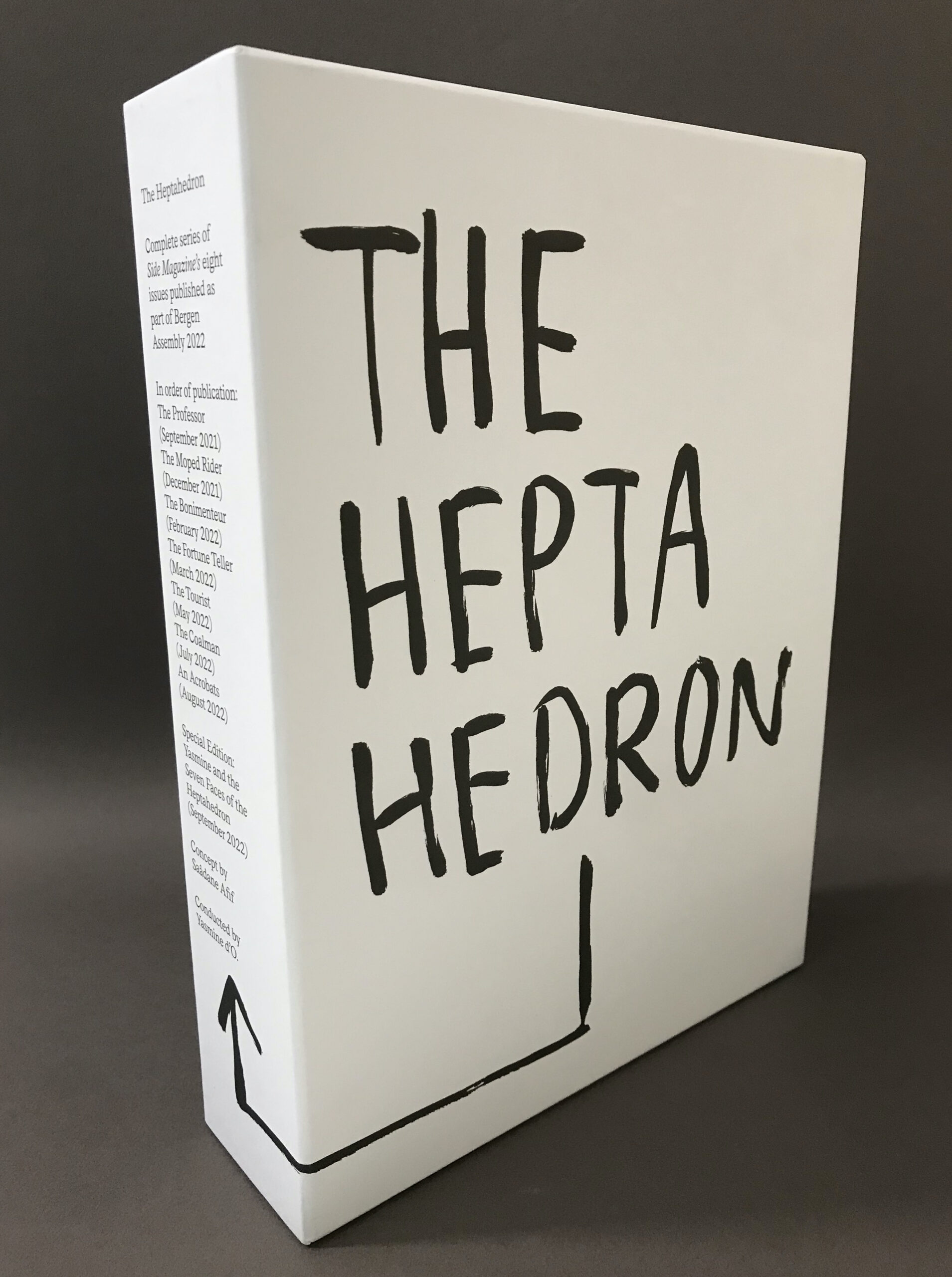
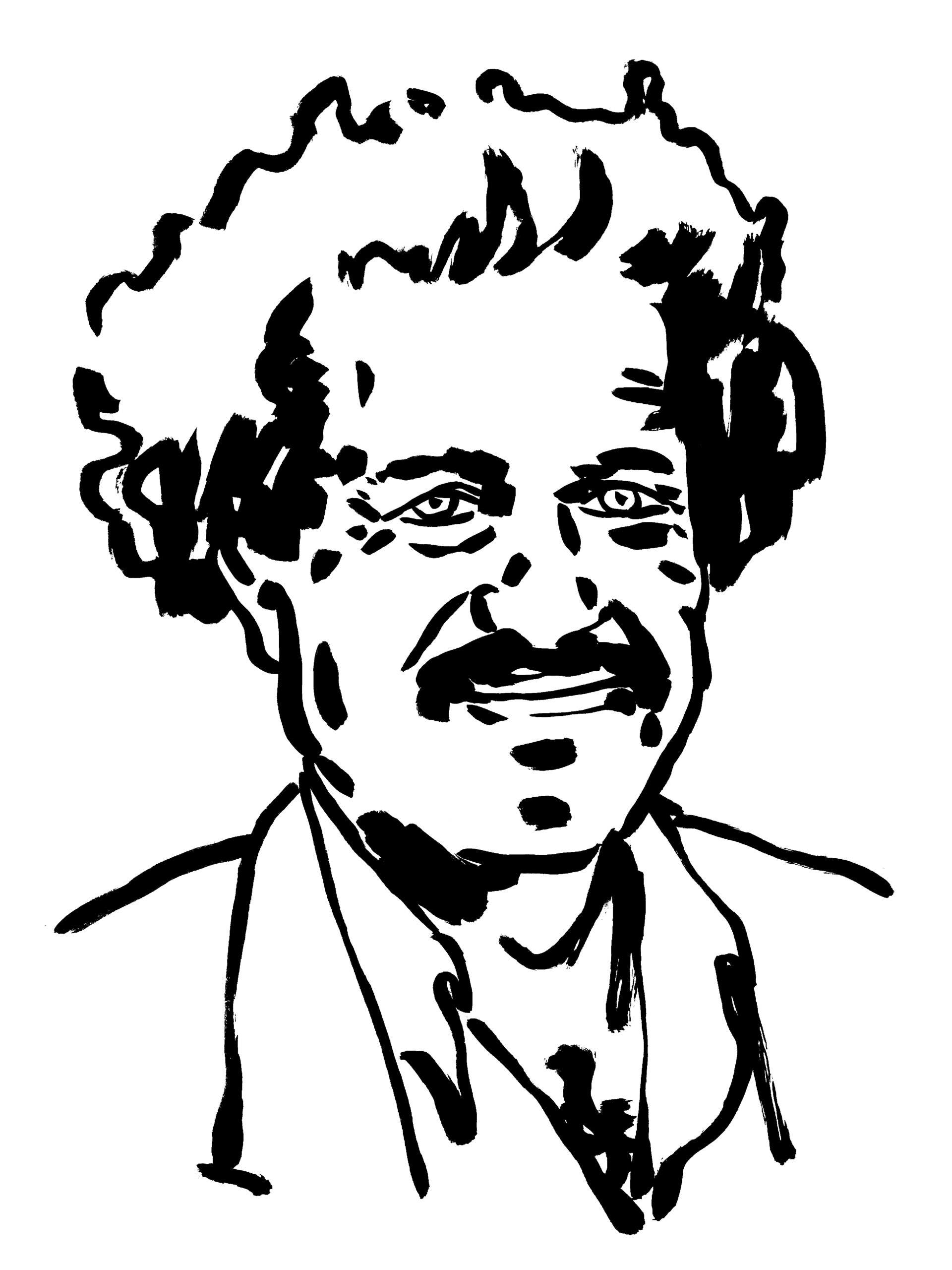
Dans la section du Charbonnier, The Coalman, on trouve la présence de Claude Debussy. Ma question est de savoir comment cette présence se manifeste. Comment expose-t-on la musique ? C’est intéressant d’avoir ton point de vue sur cette question. En voyant des images de cette partie de l’exposition, je pense rétrospectivement à l’exposition sur panneaux de la Kunsthalle de Vienne dont tu parlais, au genre de l’exposition documentaire d’écomusée.
Avant même d’être invité par Bergen Assembly, j’ai commencé à développer des idées autour du Charbonnier pour une exposition qui n’a pas eu lieu. Qu’est-ce que le charbon ? C’est une chose très ambiguë, qui nous ramène, à la fois, au progrès et au confort, et à l’histoire de l’extraction, de la colonisation, et des luttes ouvrières les plus dures, puis à la situation écologique désastreuse que nous connaissons. Le charbon c’est une drogue aussi addictive que l’héroïne. En Allemagne, on s’éclaire encore à 50% au charbon. Que pourrait-on faire sans lumière ? On ne peut pas encore s’en passer. Je voulais parler de ce nœud complexe, non pas sous l’angle militant de l’écologie politique, mais de manière poétique. J’ai découvert cette pièce de Debussy, Les Soirs illuminés par l’ardeur du charbon, sa toute dernière pièce pour piano solo, dont le titre est tiré du poème Le Balcon de Baudelaire. Debussy a écrit cette pièce en 1917, il est mort en 1918. Il était pauvre et très malade et, en pleine guerre, l’approvisionnement en charbon était très difficile… comme aujourd’hui d’ailleurs. Son impresario lui avait donné le contact d’un charbonnier, qui lui a demandé, en échange de son combustible, un autographe, une partition originale signée. Debussy a donc composé sa toute dernière pièce pour ce charbonnier en échange de sa marchandise. Il y a d’ailleurs une correspondance entre les deux hommes. L’histoire est belle et dit beaucoup sur notre addiction aux énergies fossiles, au confort. La pièce de Debussy est aussi très belle car elle est pleine d’une mélancolie crépusculaire. L’exposition documente cette histoire et un piano est disponible dans la salle. On a invité des professeurs de piano à venir répéter la pièce avec leurs étudiants.
Est-ce que les manifestations associées (concerts, performances ou talks) sont à ce jour terminées à Bergen Assembly ?
On est en train d’organiser les deux dernières semaines qui culmineront le week-end du 5-6 novembre. C’est encore un peu improvisé mais il faut regarder le programme en ligne. L’un des lieux de la triennale est un petit club. A Bergen tout est plus petit en termes d’échelle mais tout est au standard international. Dans la section The Fortune Teller, parmi les trois artistes invités, il y a Jessika Khazrik, une artiste libanaise, passée par le MIT, où elle a fait des recherches en écotoxicologie. Elle est également productrice de musiques électroniques et crée aussi des œuvres. On lui a confié ce club pour qu’elle en devienne l’âme en tant que diseuse de bonne aventure. Il y a déjà eu deux nuits et deux soirées les 21 et 22 octobre.
A Bergen, il y a la présence très forte du compositeur Edvard Grieg, dont on peut visiter la maison et notamment la hutte de composition. Dans la banlieue d’Oslo, le Heni Onstad Kunstsenter, incorporé dans un environnement étendu, jouit d’un prestige semblable à celui du Black Mountain College, avec une collection d’œuvres Fluxus et des liens historiques avec John Cage. Et en Norvège, le black metal est aussi très ancré. Est-ce que pour le programme tu as travaillé à partir des dynamiques locales ?
Yasmine et les sept faces de l’Heptaèdre est une histoire hors-sol qui est venue se poser comme un vaisseau spatial sur la ville de Bergen. Mais nous avons fait particulièrement attention à ce que certaines œuvres ou performances des artistes invités s’inscrivent ou interagissent avec des structures locales. Sur les 21 projets présentés, une douzaine ont cette fonction et parmi ceux-là, trois sont des performances musicales. Le compositeur Augustin Maurs a produit pour l’occasion Nothing More, une pièce pour chœur et orgue, et une installation dans la section The Coalman en utilisant l’extraction de la voix comme source de résilience sonore et politique. Le deuxième projet musical est celui de Jessika Khazrik dans le cadre de The Fortune Teller que nous venons d’évoquer. Et dans la section The Tourist, le troisième moment musical est un concert du groupe de Dominique Gonzalez-Foerster, Exotourisme formé avec Perez qui a eu lieu le soir du vernissage en lien avec la présentation de l’ensemble de l’expérience Exotourisme : une chambre inédite pluggée à l’environnement historique, présenté en 2002 au Centre Pompidou à l’occasion du prix Marcel Duchamp.
Mais c’est important de ne pas trop expliquer, de laisser les œuvres dans toute leur sauvagerie, de ne pas essayer de les dompter. C’est avant tout au regard qu’elles s’adressent. A ce dernier de les faire exister. Une œuvre qui n’est pas regardée n’existe pas ou elle reste pour le moins muette. C’est pourquoi ce rôle principal, celui de Yasmine, a été donné au public.
Propos recueillis par Tristan Bera



)
